Guest writer ERIC McNAUGHTON reveals the cinematic history of the Whitechapel murders and picks his top five favourite Jack the Ripper films, in no particular order:
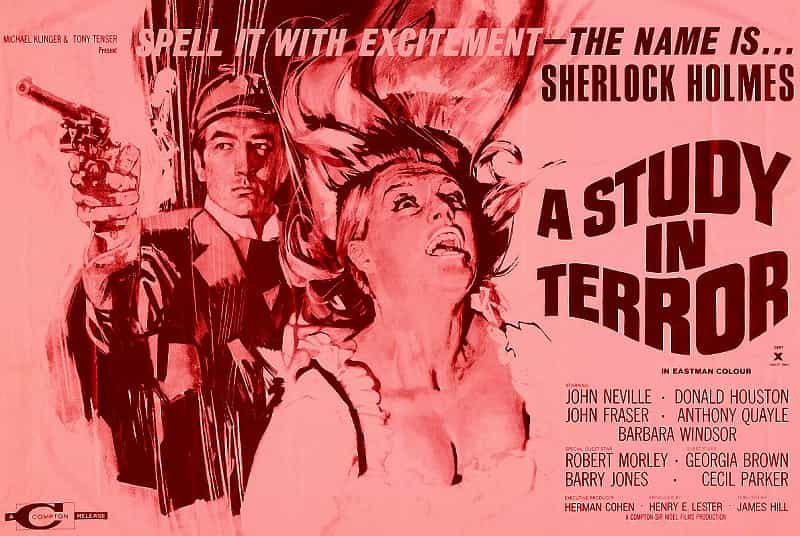
In the early hours of Friday, 31st August 1888, the body of Mary Ann Nichols was found in Bucks Row in London’s Whitechapel district.
She had been horribly mutilated and was the first victim of the serial killer who was to become infamous as Jack the Ripper.
124 years on we are no nearer to learning his or her identity, despite literally hundreds of theories. Such is our fascination, there have been numerous attempts to tell the story on film.
One of the earliest was Alfred Hitchcock’s “The Lodger – A Story of the London Fog” (1927).
It was based on the novel by Marie Belloc Lowndes although the ending was changed when matinee idol Ivor Novello was cast as the title character.
The film was subsequently remade in 1932, 1944, 1953 (as “The Man in the Attic”) and 2009. Very similar was “Room to Let” (1949) starring Valentine Dyall (the Man in Black) and made by Hammer Films who would subsequently give us two more Ripper-themed films in “Hands of the Ripper” and “Dr Jekyll & Sister Hyde” (both 1971).
Although Hammer never made a Ripper film per se, their favourite scriptwriter Jimmy Sangster did write the screenplay for 1959’s “Jack the Ripper”, a pretty decent effort. Six years later came the wonderful “A Study in Terror” which pitted the fictional Sherlock Holmes against the Ripper.
Along similar lines was Bob Clarke’s brilliant “Murder By Decree” (1979) with an all star cast headed by Christopher Plummer and James Mason.
The latter film was based on the book “Jack the Ripper: The Final Solution” by the late Stephen Knight which put forward a Royal connection and Masonic involvement. The same theory would be used again in both a TV production starring Michael Caine (1988) and in Alan Moore & Eddie Campbell’s graphic novel “From Hell” which was made into a film in 2001 with Johnny Depp.
Perhaps the nastiest Ripper film was Jess Franco’s “Jack the Ripper” (1976) starring Klaus Kinski.
A more enjoyable film was “Time After Time” (1979) in which Malcolm McDowell’s H.G. Wells chases David Warner’s Ripper through time to modern day San Francisco.
And let’s not forget “Terror at London Bridge” (1985) a made for TV movie with David Hasslehoff!!
Honourable mention also to the excellent TV series “Whitechapel” (2009) in which a modern day killer murders his victims on the same dates and in the same manner as the original.
Finally mention must be made of those films which are not about the Ripper, but feature him in some small way.
One of the first was Paul Leni’s “Waxworks” (1924), an early example of a compendium film, where in the final segment the Ripper (played by Dr Caligari himself, Werner Krausse) pursue the heroes through a fairground and waxworks.
G.W. Pabst’s masterpiece “Pandora’s Box” also features the Ripper in the final scenes where Lulu, played by Louise Brooks, has her fatal encounter with him. From the sublime to the ridiculous, “The Ruling Class” (1972) features a completely bonkers performance from Peter O’Toole as an aristocrat who believes himself to be the Ripper for part of the film.
And finally, what Ripper overview would be complete without “Amazon Women on the Moon” (1987) where it is revealed that Jack the Ripper was in fact … the Loch Ness monster!
One thing is for sure, the public’s enduring obsession with the Ripper and the 5 women he slaughtered during that Autumn of terror in 1888 means we haven’t seen the last of him on the big screen.
Top 5 Jack the Ripper films
The Hands of the Ripper (1971)
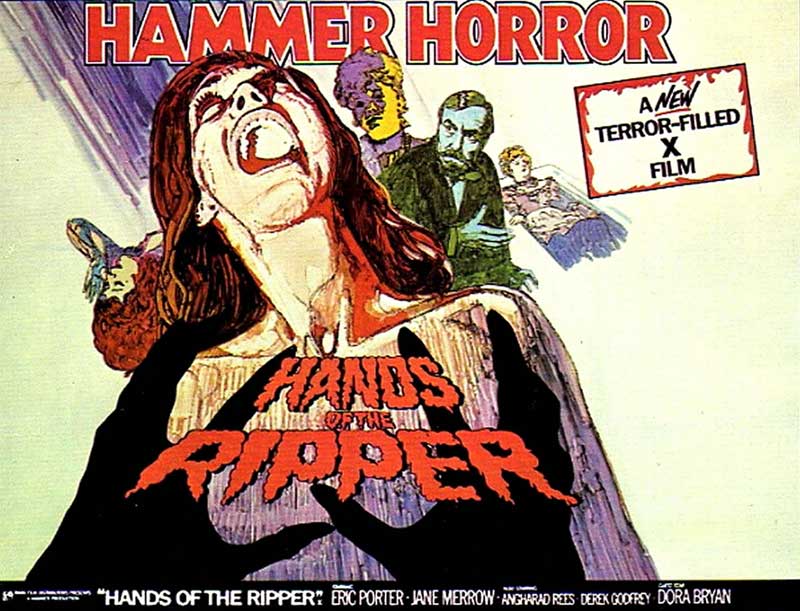
Hammer films never got round to making a film about Jack the Ripper as such, which is surprising really.
This is the nearest they came, with the Ripper himself appearing only in the pre-credits sequence.
Angahard Rees (who sadly passed away very recently) is wonderful as Jack’s daughter who seems to have inherited a murderous affliction from her father.
This results in a number of gruesome and surprisingly gory murders (the killing of the maid and the stabbing of Long Liz with the hatpins are particularly shocking).
Eric Porter plays a Freudian psychoanalyst trying to help her, who for his troubles gets skewered with a big sword.
Wonderful lush cinematography and a wonderful score make this one of the better latter day Hammers.
The same year they also gave us “Dr Jekyll and Sister Hyde” which mixed Dr J with Burke and Hare and the Ripper murders.
Read full The Hand of the Ripper (1971) review here.
The Lodger – A Story of the London Fog (1927)
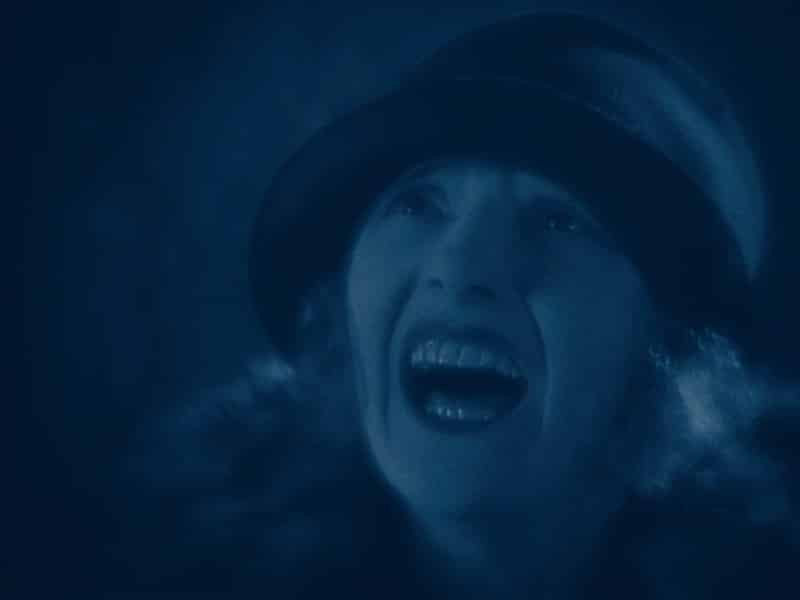
This was Alfred Hitchcock’s third film after a couple of commercial failures.
It is based on Marie Belloc Lownde’s story of a mysterious lodger whose comings and goings late at night arouse the suspicions of his landlord and wife.
Is he the mass murder terrorizing London? The story is left open ended, but when matinee idol Ivor Novello was cast as the titular character the ending had to be changed!
No way was there going to be even a hint of doubt that the Lodger was innocent.
The theme of the innocent man wrongly accused of a crime was to become a staple of Hitchcock’s later films, but here it gets its first airing.
It is ironic to think that The Lodger is the only noteworthy silent horror film to come out of England.
It was to launch the career of perhaps the most famous director ever.
Read the review of The Lodger – A Story of the London Fog (1927) here.
A Study in Terror (1965)
This was the first time anyone had thought of pitting Conan Doyle’s fictional sleuth against the world’s most famous real life serial killer.
Based on an Ellery Queen story, the film is exceptionally well made.
John Neville makes a wonderful Holmes, ably assisted by Donald Houston as Watson and there is a wonderful cameo by Robert Morley as Mycroft Holmes.
Frank Finlay plays Inspector Lestrade, a role he would repeat in that other Holmes/Ripper film “Murder By Decree”.
In my opinion this is a cracking good film, with lots of action and suspense, and to my knowledge it was the first time the theory of the Ripper as an aristocrat was put forward.
A wonderful cast of talented actors, great colour and a great storyline make this essential viewing for Ripperologists and fans of Holmes alike.
Read the review of A Study in Terror Review (1965) here.
Murder By Decree (1979)
Of the 140-plus Sherlock Holmes films made, Bob Clark’s 1978 film Murder by Decree is by far the most intelligent and entertaining outing of Baker Street’s famous sleuth.
The idea of mixing Conan Doyle’s fictional detective with the historical figures and events of that Autumn of Terror of 1888 is an intriguing proposition.
Of course it, had been done before in 1965’s A Study in Terror; where Murder by Decree differs is that to a large extent it is based on historical fact and pays close attention to the details of the Ripper murders.
As any Ripperologist knows, there are a hundred and one so called solutions as to the identity of Jack the Ripper.
All have their flaws. Murder by Decree uses the work of the late Stephen Knight for its plot emphasis.
Basically Knight’s argument was that the murders involved a conspiracy by the Freemasons and implied complicity at the highest level of Government and into the very heart of the Royal Family itself.
In the real-life figure of the Ripper it seems that Holmes has an adversary as cunning and intelligent as himself.
But it would be wrong to assume that Murder by Decree is merely a cinematic version of Stephen Knight’s Jack The Ripper – The Final Solution because the film is much more than that.
It takes Knight’s theories, the Ripper murder facts and Sherlock Holmes’ superior intellect, blends them all together and produces an exciting and entertaining film.
The film itself opens with the Ripper’s third murder.
This is not a film about the Ripper per se.
As Holmes, Christopher Plummer shines in perhaps his greatest performance and in my opinion equals, if not betters any other portrayal of Holmes – yes, even those of Basil Rathbone and Peter Cushing!
Plummer’s detective isn’t merely a cold calculating figure, but can show real anger and emotion (not a trait usually connected with the character) as in the scene where he finally tracks down Annie Crook (played by Geneviève Bujold) in an insane asylum.
The supporting cast too are superb. James Mason, who was so often wasted in his later films, plays Watson as an equal to Holmes, and here Mason’s portrayal lives up to what I think Conan Doyle would have wanted.
One of the outstanding features of the film are its impressive sets.
You can readily believe this is what the streets of Whitechapel must have looked like in that autumn of 1888 as the Ripper went about his savage work.
Read the review of Murder by Decree (1979) here.
Jack the Ripper (1959)
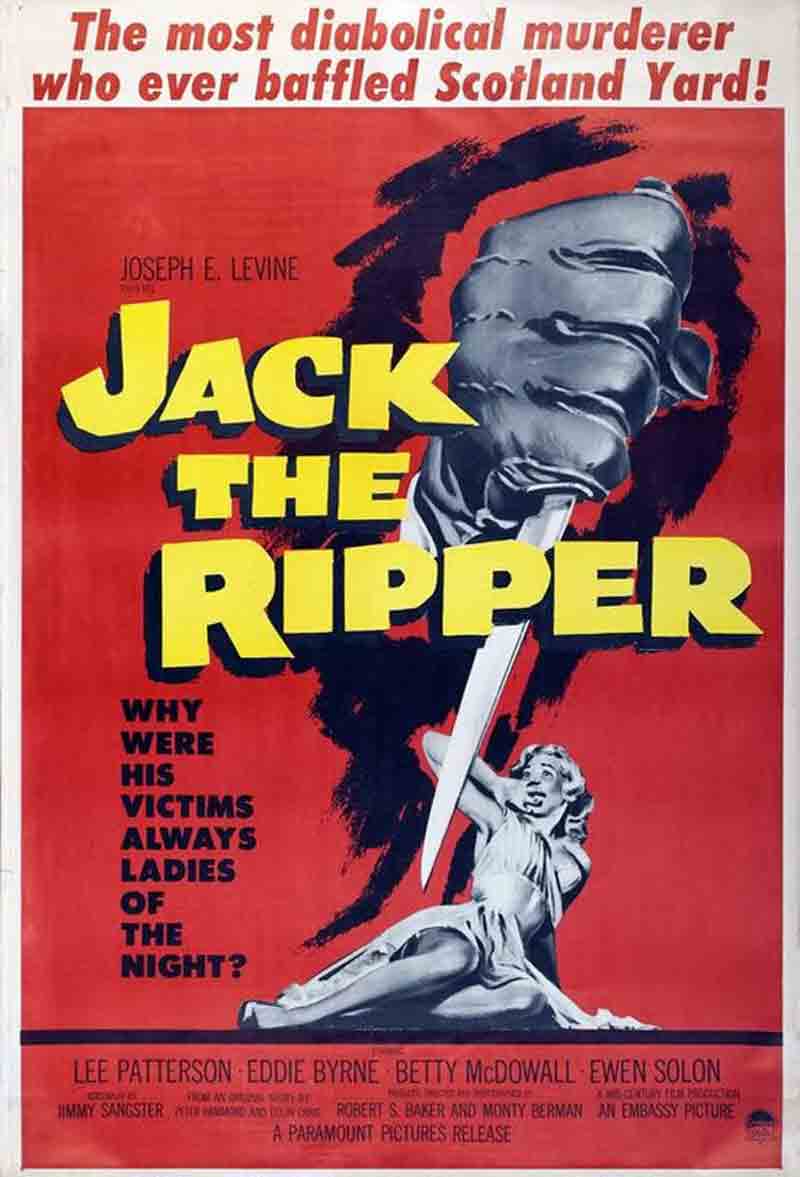
I think of all the Jack the Ripper films, this has to be my favourite.
I remember seeing it late one Friday night on Tyne Tees when I was a kid, and being really scared.
The script is by Hammer’s own Jimmy Sangster and is loosely based on the theory put forward by one of the earliest Ripperologists, Leonard Matters, that the Ripper was a doctor out to avenge the death of his son who had contracted a ‘social disease’ from a prostitute.
The film had one of the most expensive publicity campaigns ever when a million dollars was spent on advertising, but it paid off and the film became a huge hit.
Although, like many early Ripper films, it is historically incorrect, it is a fast paced little thriller with lots of red herrings.
The film is in atmospheric black and white, but original prints turned blood red when the Ripper is killed at the end.
Well worth tracking down, I recently found a decently priced French DVD release, sadly without the colour ending.
“Are you Mary Clark?”
Read Jack the Ripper 1959 review here.
Do you agree that these Jack the Ripper films are the best? Tell us in the comments section below!


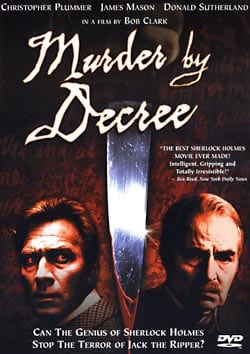
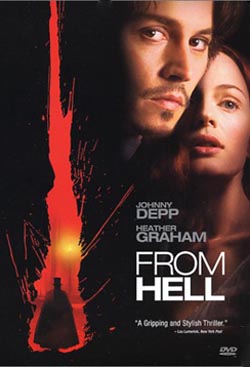





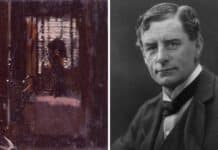
Soon be Halloween.
i think that the hands of the ripper and murder by decree are very films i would recommend them to anyone who likes jack the ripper movies
The Michael Caine version does not contain either Freemasons or the Royal conspiracy. It uses Sir William Gull as the murderer, but gives him a different motivation.
Yes, highly recommended. It’s a well produced 2 part feature that has some elements that relatable.
However, it does get a few fundamentals wrong:
1) Abberline is played as a Londoner, when he was born and spent his all his early life in Dorset.
2) The character Emma Prentiss is totally fictional. Abberline was happily married to his 2nd wife, Emma.
3) As far as research goes none of the victims knew each other.
4) Not all the victims were prostitutes. The first two, Polly Nichols and Annie Chapman both were married with children & came from middle class families.